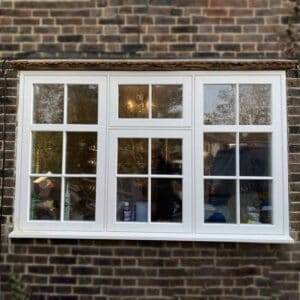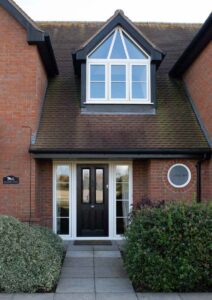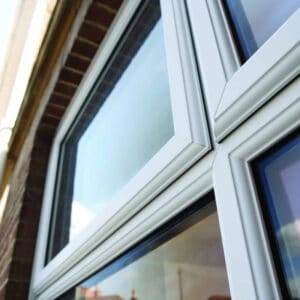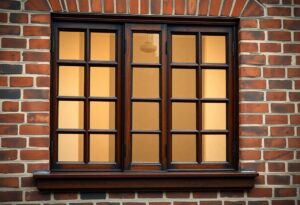Systems today integrate advanced technologies that revolutionise building design, making them more efficient, sustainable, and user-friendly. You will discover how smart systems enhance energy management, improve security, and foster occupant comfort within modern structures. As buildings evolve, embracing these innovations will not only increase their functionality but also contribute to a greener future. Understanding this integration is vital for anyone involved in architecture, engineering, or property management, as it shapes the spaces where you live and work.

The Evolution of Building Design
From Traditional to Smart Buildings
For centuries, building design has focused on aesthetics and functionality, primarily responding to the needs of the occupants and the environment. However, the advent of smart technology has revolutionised this process, allowing for structures that adapt, learn, and optimise their use of resources, thereby enhancing your living and working experiences.
The Role of Technology in Modern Architecture
Any discussion about contemporary architecture must acknowledge the significant influence of technology, which has transformed design principles and practices. Today, architects leverage advanced software, smart materials, and IoT (Internet of Things) devices to create buildings that not only meet sustainable standards but also feature an unparalleled level of interactivity and comfort.
Traditional design methods often lacked the ability to respond dynamically to external conditions. In contrast, modern technology allows structures to monitor and adjust heating, lighting, and energy use based on real-time data. This not only leads to improved energy efficiency but also creates an environment where you can enjoy greater comfort and convenience. As these technologies continue to evolve, the possibilities for innovative building designs are limitless, paving the way for a future that seamlessly integrates your needs with the built environment.
Key Components of Smart Systems
Sensors and Data Analytics
You rely on sensors and data analytics to gather critical information about your building’s environment. These sensors monitor various parameters such as temperature, humidity, and occupancy levels, providing real-time data that helps optimise energy efficiency and comfort. By analysing this data, smart systems can make informed decisions and improve the overall performance of your building, ensuring a more sustainable and efficient space.
Automation and Control Systems
The implementation of automation and control systems revolutionises the way buildings operate. These systems manage and streamline various functions such as lighting, heating, ventilation, and security, allowing for an integrated approach to building management. This not only enhances convenience but also significantly reduces energy consumption.
Smart automation systems use algorithms and artificial intelligence to learn from your habits and preferences. This means they can adjust settings automatically, creating a harmonious environment tailored to your needs. Moreover, these systems enable remote access and control, allowing you to manage your building effortlessly, no matter where you are. By embracing automation, you contribute to a smarter, greener future for building design.
Benefits of Smart Systems in Building Design
Little did you know, the integration of smart systems in building design significantly enhances energy efficiency and sustainability. These systems allow for real-time monitoring and management of energy usage, optimising heating, cooling, and lighting. By intelligently responding to occupancy and environmental factors, they reduce energy waste and lower carbon footprints. Ultimately, this leads to more sustainable buildings that not only meet the demands of modern living but also contribute positively to the environment.
Energy Efficiency and Sustainability
With advances in technology, smart systems empower you to achieve remarkable energy efficiency in your building. You can utilise sensors and automated controls to adjust energy consumption based on real-time data, ensuring only the necessary amount is used. This not only lowers operational costs for you but also aligns with the growing need for sustainable practices in architecture and design.
Enhanced User Experience and Productivity
Energy efficiency is only one part of the equation; the integration of smart systems also significantly enhances your experience and productivity within a building. By offering personalised environments, these systems adapt to your preferences, ensuring optimal comfort. Features such as automated lighting and climate control create an atmosphere conducive to better focus and relaxation, allowing you to accomplish tasks more efficiently and enjoy your space to its fullest.
Experience the shift in your daily routine as smart systems optimise your workspace or living environment. These intelligent systems not only enhance physical comfort, but they also enrich the overall ambience with intelligent lighting and soundscapes. With personalised settings just a touch away, you maintain a greater sense of control over your surroundings, facilitating improved concentration and boosting productivity in both work and leisure activities. Investing in smart technology is, therefore, not just about functionality; it’s about cultivating an enriching experience that inspires you to thrive.
Challenges and Future Directions
Integration and Interoperability Issues
For many architects and engineers, the integration of smart systems within building design presents significant challenges. These systems often rely on various protocols and platforms that may not communicate effectively with each other, leading to inefficiencies and additional costs. You must ensure that your selected technologies can work harmoniously together to achieve the desired outcomes for your projects.
Cybersecurity Concerns and Solutions
Issues surrounding cybersecurity remain paramount as you adopt smart building technologies. With the increase in interconnected systems, the risk of cyber threats grows, requiring robust security measures to protect your buildings and their data. Implementing encryption, access controls, and regular security audits can help safeguard your infrastructure and mitigate potential risks.
Understanding the scope of potential cybersecurity threats is crucial for ensuring the safety and integrity of your smart systems. As these environments become more sophisticated, so do the methods employed by cybercriminals. By staying informed about the latest security trends and investing in comprehensive training for your team, you can create a proactive culture of cybersecurity. This approach not only protects your assets but also enhances the overall resilience of your building’s smart systems, enabling you to navigate future challenges with confidence.
Conclusion
Taking this into account, you can appreciate how smart systems are revolutionising cutting-edge building design, integrating innovation with sustainability. These technologies not only enhance energy efficiency but also improve the user experience, making your environment more responsive to your needs. As you explore the future of architecture, recognising the pivotal role of smart systems will help you understand the fusion of functionality and aesthetics in modern design.
FAQ
Q: What are smart systems in building design?
A: Smart systems in building design refer to integrated technologies that enhance the efficiency, functionality, and adaptability of buildings. These systems fuse advanced sensors, automation, and data analytics to monitor and manage various aspects of a building, such as lighting, temperature, security, and energy use. Smart systems contribute to creating sustainable, user-friendly environments, optimising energy consumption, and ensuring that buildings respond dynamically to their occupants’ needs.
Q: How do smart systems improve energy efficiency in buildings?
A: Smart systems significantly enhance energy efficiency by utilising real-time data to adjust energy consumption based on occupancy, weather conditions, and usage patterns. For instance, smart lighting systems can automatically adjust brightness based on the natural light available or turn off when a room is unoccupied. Additionally, smart thermostats can learn occupants’ schedules and preferences, optimising heating and cooling, which leads to reductions in energy waste and lower utility bills.
Q: What role do smart systems play in enhancing occupant comfort and safety?
A: Smart systems are imperative in improving occupant comfort and safety by offering personalised experiences and proactive security measures. Smart buildings can monitor air quality and adjust ventilation accordingly, ensuring a healthy indoor environment. Furthermore, integrated security systems can provide real-time surveillance, access control, and alarm functionalities, effectively protecting occupants. These systems can even allow occupants to adjust lighting, temperature, and other settings through mobile applications, ensuring their needs are met in real-time.













